I. What are the Fundamentals and Key Terms of Oxidative Phosphorylation?
We introduced what happens during glycolysis in anaerobic conditions; now, we get into the heavy stuff: aerobic glycolysis. While we don’t want to scare you, we want to prepare you for the amount of enzymes and steps that need to be memorized!
It’s natural that most of the cells have the capacity to undergo aerobic glycolysis, and thus oxidative phosphorylation, as it’s the process that provides the most amount of energy for the cell to use in the form of ATP.
We know… it’s definitely daunting to take on this topic with the sheer amount of information to memorize: that’s why we're gonna take it step by step. In this oxidative phosphorylation section, we’ll split the topic into 3 separate topic articles!
II. Substrates, Products, and General Features of Oxidative Phosphorylation
Per usual, let’s start off with a quick overview of oxidative phosphorylation to get ourselves situated with a macroscale view of the process!
A. Definitions
Oxidative phosphorylation allows for ATP production achieved by the H+ chemiosmotic gradient generated by the electron transport chain (ETC). We know that’s a lot to take in, but it’ll all make sense after the article.
Though by definition oxidative phosphorylation is really only associated with the ETC, this process originates after glycolysis, with the pyruvates entering the pyruvate dehydrogenase complex (PDH) & the citric acid cycle before the ETC!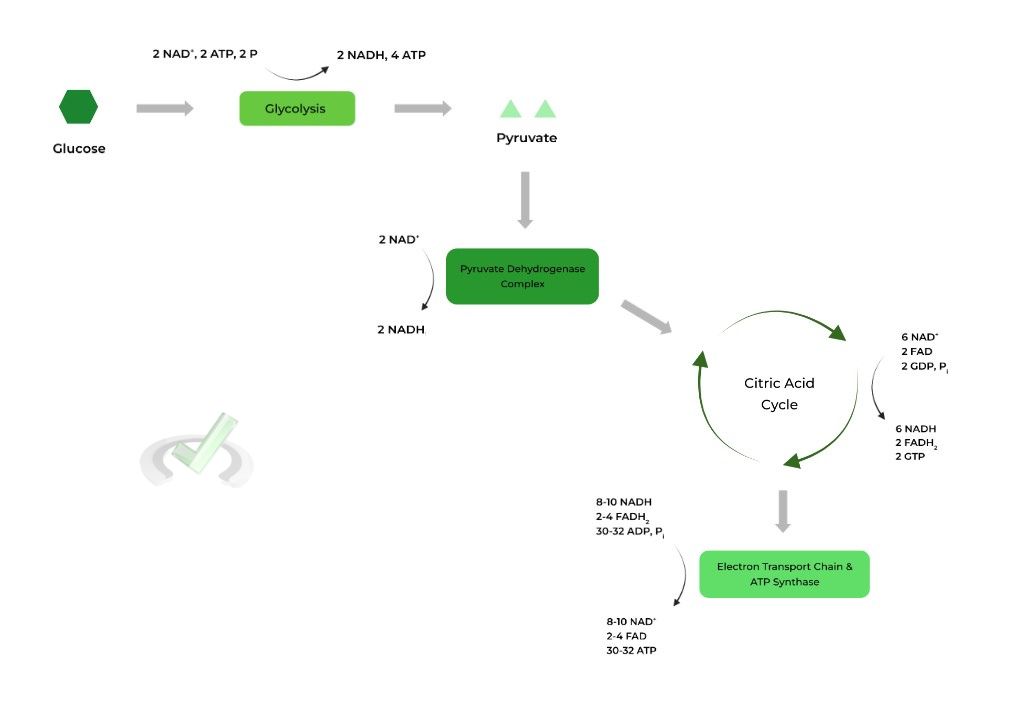
B. Mitochondria Structure
Before discussing the above mentioned processes, we first must have a brief look of the mitochondria, as all the above mentioned processes take place within the mitochondria.
The mitochondria is a membrane bound organelle composed of 2 phospholipid bilayer membranes, termed the outer & inner membrane. These membranes have numerous folds called cristae to MAXIMIZE the surface area for the ETC!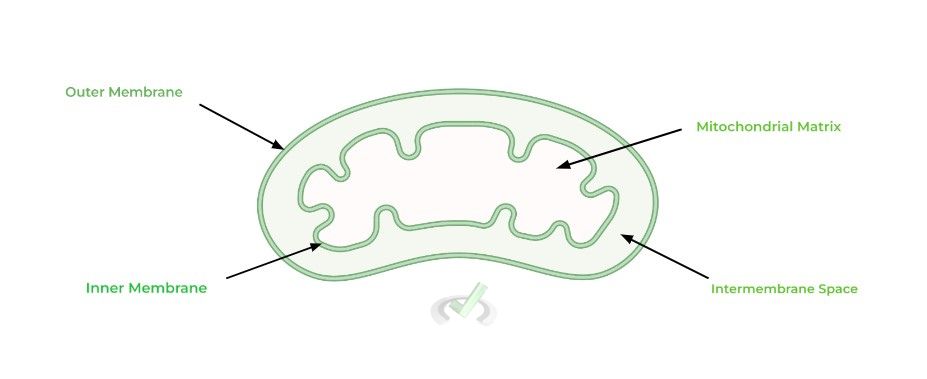
The innermost portion is called the mitochondrial matrix where the pyruvate dehydrogenase complex & the citric acid cycle occurs. The space between the outer & inner membrane is called the intermembrane space where the chemiosmotic gradient is established!
C. Pyruvate Dehydrogenase Complex
Localized within the mitochondrial matrix, this complex allows for the further oxidation of pyruvate into acetyl-CoA as well as NADH. Acetyl-CoA can then enter into the proceeding citric acid cycle!
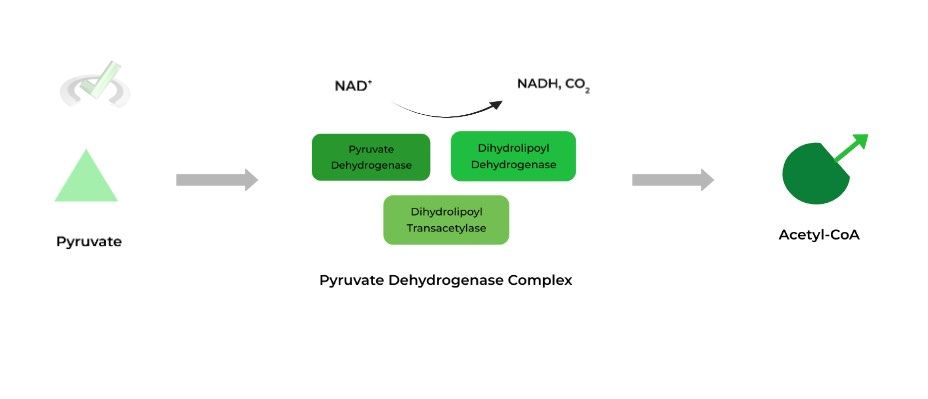
This complex is actually composed of three separate enzymes: 1) pyruvate dehydrogenase, 2) dihydrolipoyl transacetylase, and 3) dihydrolipoyl dehydrogenase. We’ll cover these enzymes in more detail in its own article!
D. Citric Acid Cycle (Krebs Cycle)
Also located in the mitochondrial matrix, the citric acid cycle (A.K.A. The Krebs Cycle or Tricarboxylic Acid Cycle), allows for the generation of NADH and FADH2. These high energy electron carriers will then enter the ETC to aid in the generation of ATP!
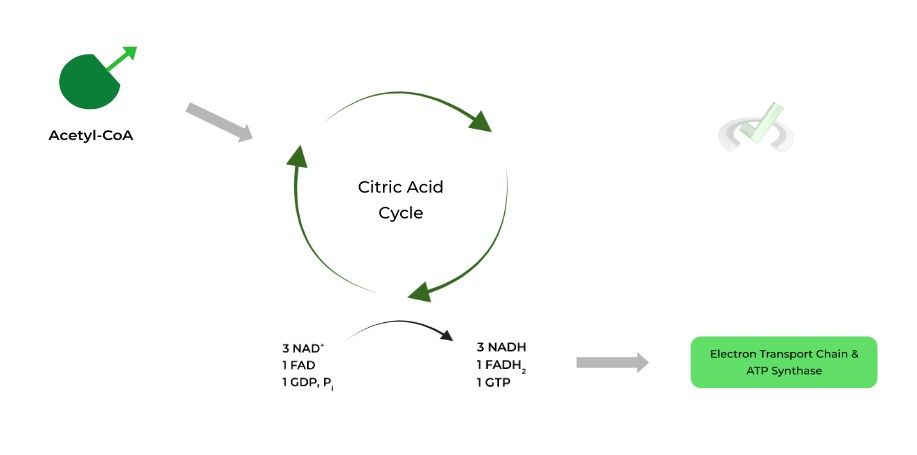
As suggested by its name, the citric acid cycle constantly regenerates the same molecules in the process. The one molecule of particular interest is oxaloacetate, generated in the last step. Oxaloacetate reacts with the incoming acetyl-CoA which then starts the cycle over again.
E. Electron Transport Chain
Embedded within the inner mitochondrial membrane, the ETC further oxidizes the high energy carriers such as NADH and FADH2 in order to generate a H+ chemiosmotic gradient between the intermembrane space and mitochondrial matrix.
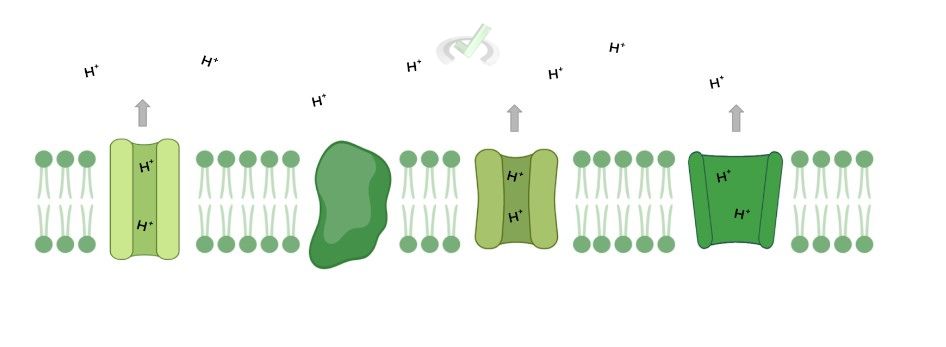
The ETC is composed of 4 different enzymes; complex I, II, III, and IV. By oxidizing NADH and FADH2, the complexes transfer the electrons to reduce O2, but more importantly pump protons across the inner membrane into the intermembrane space to generate the H+ chemiosmotic gradient to power ATP synthesis!
F. ATP Synthase
Also embedded in the inner mitochondrial membrane, ATP synthase utilizes the energy stored within the H+ chemiosmotic gradient to power ATP synthesis!
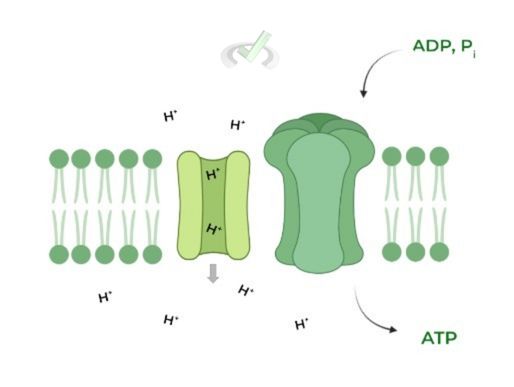
As discussed in greater detail in another article, the downhill flow of H+ ions from the intermembrane space to the mitochondrial matrix powers the addition of a free phosphate to ADP, generating ATP!
III. Bridge/Overlap
With there being so many enzymes located and involved with many of the mitochondrial processes, it’s no surprise that some enzymes are encoded by mitochondrial DNA! Let’s take a quick overview!
I. Mitochondrial DNA
Recall that outside of nuclear DNA, there is also mitochondrial DNA that is localized that can replicate and transcribe separately from the nucleus. As such, they are also inherited separately from the nuclear DNA, termed extranuclear inheritance!
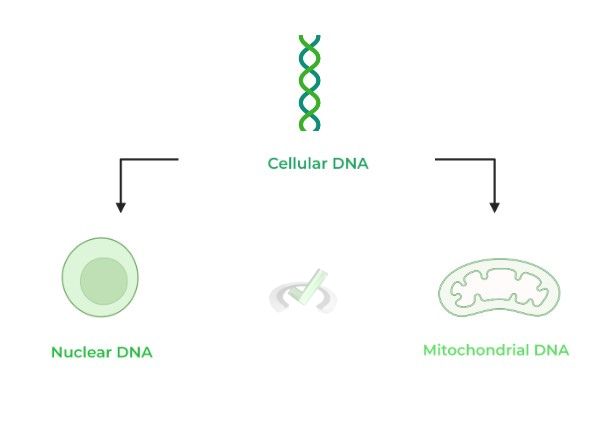
Within the mitochondrial DNA, some of the enzymes encoded include complex I (NADH dehydrogenase), complex III (cytochrome B oxidase), complex IV (cytochrome C oxidase), and ATP synthase!
IV. Wrap Up/Key Terms
Let’s take this time to wrap up & concisely summarize what we covered above in the article!
A. Definitions
In aerobic conditions, the pyruvates get further oxidized to produce more high energy electron carriers like NADH and FADH2, which utilize their stored energy to power more ATP production!
Though oxidative phosphorylation is defined as ATP synthesis via the H+ chemiosmotic gradient, think of it rather as encompassing all the processes to get to that stage including the pyruvate dehydrogenase complex, citric acid cycle, electron transport chain, & ATP synthase!B. Mitochondria Structure
Composed of 2 phospholipid bilayers, termed the outer and inner mitochondrial membranes. Encapsulated by the inner membrane is the mitochondrial matrix, where the pyruvate dehydrogenase complex and citric acid cycle occur!
The electron transport chain is embedded within the inner membrane: the membranes have multiple folds termed cristae in order to MAXIMIZE the surface area for the electron transport chain!C. Pyruvate Dehydrogenase Complex
Composed of 3 different enzymes: 1) pyruvate dehydrogenase, 2) dihydrolipoyl transacetylase, and 3) dihydrolipoyl dehydrogenase.
Oxidizes incoming pyruvate from glycolysis and generates NADH and acetyl-CoA; the latter product then proceeds into the citric acid cycle!D. Citric Acid Cycle
Also called the Krebs or Tricarboxylic Acid Cycle, the process produces more NADH and FADH2 which can further be oxidized at the electron transport chain!
Understanding that the process is a cycle is important because it constantly regenerates the same molecules during one round.
Oxaloacetate is one molecule of special interest as it is regenerated in the last step; it then reacts with an incoming acetyl-CoA to repeat the process.E. Electron Transport Chain
Composed of 4 enzymes embedded within the inner mitochondrial membrane: complex I, complex II, complex III, and complex IV.
These enzymes further oxidize NADH and FADH2 and utilize their stored energy to generate a H+ chemiosmotic gradient by pumping protons across the inner membrane to the intermembrane space.F. ATP Synthase
Also embedded in the inner membrane, this enzyme catalyzes the addition of a free phosphate, generating ATP.
The H+ chemiosmotic gradient generated by the electron transport chain powers ATP synthesis by flowing down its concentration gradient from the intermembrane space to the matrix.
V. Practice
Take a look at these practice questions to see and solidify your understanding!
Sample Practice Question 1:
From the figure shown depicting ATP synthase, which of the following best describes the protein?
A. Peripheral Protein
B. Integral, Transmembrane Protein
C. Integral, Embedded Protein
D. Cytoplasmic Protein
Ans. B
As shown in the figure, ATP synthase fully protrudes and extends through the membrane. As such, it's best to describe it as an integral, transmembrane protein!
Sample Practice Question 2:
When the H+ ions flow down their concentration gradient to power ATP synthesis via ATP synthase, which of the following best describes how the ions flow back into the mitochondrial matrix?
A. Osmosis
B. Simple Diffusion
C. Primary Active Transport
D. Facilitated Diffusion
Ans. D
Note that the H+ ions flow DOWN their concentration gradient utilizing ATP synthase as a transporter protein. This best describes facilitated diffusion, which describes the downhill flow of particles and molecules with the use of a transport protein.



 To help you achieve your goal MCAT score, we take turns hosting these
To help you achieve your goal MCAT score, we take turns hosting these 
























